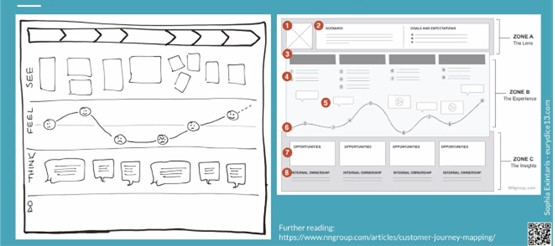I was recently asked to prepare a session for a group of law firms on Return on Investment ROI in professional service firm marketing and business development.
Sometimes, marketers are a bit like Jesse J and expect partners to make a leap of faith – “It’s not about the money, money, money – we just wanna make the world dance, forget about the price tag”. But then again, we marketers can be a bit like the quote often attributed to Einstein but probably originally from sociologist Dr William Bruce Cameron who said “Not everything that can be counted counts. Not everything that counts can be counted”. There’s truth in that for sure – especially when many marketers are involved in infrastructure projects and culture change.
I tackled the subject in two parts – getting the money and using the money. But first I asked the 50 or so people present at what stage they were at in their firms using a model by Marketo (and I recommend their free 70 page definitive guide to marketing metrics http://uk.marketo.com/definitive-guides/marketing-metrics-and-marketing-analytics):
- Denial – Marketing is an art, not a science and can’t be measured
- Fear – What if we measure marketing and the results aren’t good?
- Confusion – We know we should measure marketing, but don’t know how
- Self-promotion – Here are lots of amazing charts, aren’t we great
- Accountability – Marketing generates income and profits, see the evidence
Not surprisingly, the majority (in line with many law and accountancy firms I have worked with) were somewhere between 3 and 4.
Getting the money – ROI
Many firms simply allocate marketing budget based on last year’s figures (omitting important things such as fee-earner time and entertainment expenses for potential and existing clients and referrers) or a simple percentage of overall fee income, regardless of the starting point, the market conditions or the desired outcome. In recent times, the allocation has been based on what the firm can afford.
But in order to bid for marketing and business resources – for the firm overall, a particular department or sector group or for a specific campaign – it is necessary to prepare a business case that outlines what investment is required compared to the expect results.
ROI calculations are common here – along with NPV and IRR and payback.
The ROI calculation is straightforward at first glance – it is simply the gain from investment minus the cost of investment, divided by the cost of investment.
However, therein lies the problem. It is not easy obtaining these numbers in a professional service firm.
To understand the net profit, we must have access to data that shows the profit for a particular client or transaction which many professional service firm systems do not yet provide. And that’s before we get to the knotty topic of fixed and variable costs (e.g. fee-earner and marketing time) and overhead allocation.
Then there is the issue of the professional service firm sales cycles – sometimes it can take one click in consumer services (B2C) but on the commercial side (B2B) it may take many years before an enquiry, contact or lead is converted into business. The sales cycle in B2B sectors is on average nine months with nine separate contact points.
Of course, we may need sophisticated systems in order to forecast what business will be generated as often we have no benchmarks of what revenue (and profit) is typically generated for each pound or Euro or dollar of professional firm marketing investment. Numerical forecasting techniques often rely on historical data (and this rarely exists in the form needed) and Delphi methods and scenario planning rely on the opinions of experts – typically the professionals themselves. Not trivial and often unreliable.
Also, it is difficult to attribute a client or piece of work (what about when additional revenue and profit comes from existing clients and referrers?) to a specific marketing/BD activity – often, the professional themself will claim the “win” after sometimes many contacts. The attribution issue is well known in digital marketing. When we create an integrated campaign it is easier to attribute success to the overall campaign comprising research, promotion, marketing, selling and relationship management activities than one specific activity.
Whilst we considered the merits of CLV (Client Lifetime Value) and some other approaches (e.g. marketing originated client percentage – see the paper from Hubspot http://offers.hubspot.com/the-six-marketing-metrics-your-boss-actually-cares-about), we agreed that we needed clear business objectives against which we could develop appropriate marketing objectives (with built in measurement and enhancement of our marketing information systems where necessary) on which proposed strategies and campaigns could be designed. But too often, marketers are directed to spend their time managing a lot of stuff where the impact on the sales cycle is incredibly hard to determine.
Using the money – KPI
Once an objective is established, we can break down the goals and identify the relevant Key Performance Indicators (KPI). Project management techniques are helpful here. There’s a blog on the stepping stone technique.
In contrast, we considered the typical marketing/BD reports and analyses which tended to present what was easily captured – where digital analytics and marketing communications micro measures often dominated. So there is a tendency to report on what is available, rather than what the Board, the partners or the marketing/BD team actually need to make sound business decisions.
We considered some standard marketing models (counting, efficiency, business outcome, likelihood of outcome) and the sales pipeline approach (targets, prospects, leads, opportunities, closed deals) before turning our attention turned to other models such as:
- Communications models (e.g. the Valid Metrics Framework by AMEC – which has measures for awareness, knowledge, interest, preference and action for intermediaries and target audiences)
- Integrated measures such as PESO (Paid Earned Shared Owned) by Don Bartholomew and
- 35 social media micro measures of engagement from Chris Lake at econsultancy http://econsultancy.com/uk/blog/4887-35-social-media-kpis-to-help-measure-engagement.
Then we considered a raft of macro financial and business development measures that were familiar in law firms at least – e.g. client growth rate, average fee/profit per client, number of matters per client, client retention ratio, growth in top clients etc.
At the end of the discussion, some of the ideas that were thought most valuable included:
- Partner traditional networking with social media reach
- Cost Per Enquiry (CPE) and Cost Per Acceptance (CPA) where the majority of the sourcing was online through PPC, SEO and digital marketing.
- Campaign objectives and results
- Personal partner pipeline metrics which could be aggregated across teams
- Key client dashboards
- Client satisfaction and loyalty
- Number of services used by clients (cross-selling studies show that clients using more services are more profitable)
- Infographic measurement throughout the entire acquisition and development pipelines
But everyone agreed that we needed to be clear about the business objectives up front and design systems to capture the relevant hard and soft measures that mattered from the outset. On this point, there was also an interesting discussion about measures that were important to clients too – quality, satisfaction, number of services used, share of wallet and propensity to recommend (Net Promoter Score – NPS).
Personally, I found much value in a paper written for the Cambridge Marketing College in 2009 called “The state of marketing” by Professor Malcolm McDonald which outlined many of these issues and proposed some solutions http://www.marketingcollege.com/images/uploads/2009_Malcolm_McDonald_The_State_of_Marketing.pdf
ROI in professional service firm marketing and business development remains a challenging topic and one where the debate will no doubt rage on. I’d be interesting in hearing your comments and views.









